It’s that time of year again when the temperature starts to drop and we all have to start bundling up. But when is it too cold to wash your car? Many people wonder about this, especially during the winter months. This blog post will explore some of the factors that play into deciding when it’s too cold to wash your car. It will also provide some tips on how to best protect your vehicle during the colder months!
How often do you wash a car?
It is recommended to wash a car every two weeks. However, this depends on the amount you drive and what weather conditions you are exposed to. For example, if you experience heavy rain or snowfall in your area, it may be necessary to wash your car more often.
Additionally, if you’ve just finished a road trip involving dirt roads (or even desert hiking trails) then washing your car as soon as possible can help protect its paint job from further damage. In any case, regardless of how often you drive or what kind of environment your vehicle is exposed to, regular cleaning can keep it looking polished and presentable!
Regular washing also helps keep the important metal parts from rusting. It is best to use mild soap and a soft cloth or sponge when washing your car, as harsh cleaners may damage the exterior paint job. Additionally, you should only use clean water for rinsing – never let untreated soapy water run off of your vehicle onto public streets or into storm drains.
Finally, it is important to take extra care around sensitive areas of your car (such as the windshield) by using the appropriate cleaning supplies on these specific spots. Doing so will help maintain visibility and ensure that your car remains in good condition [1]!
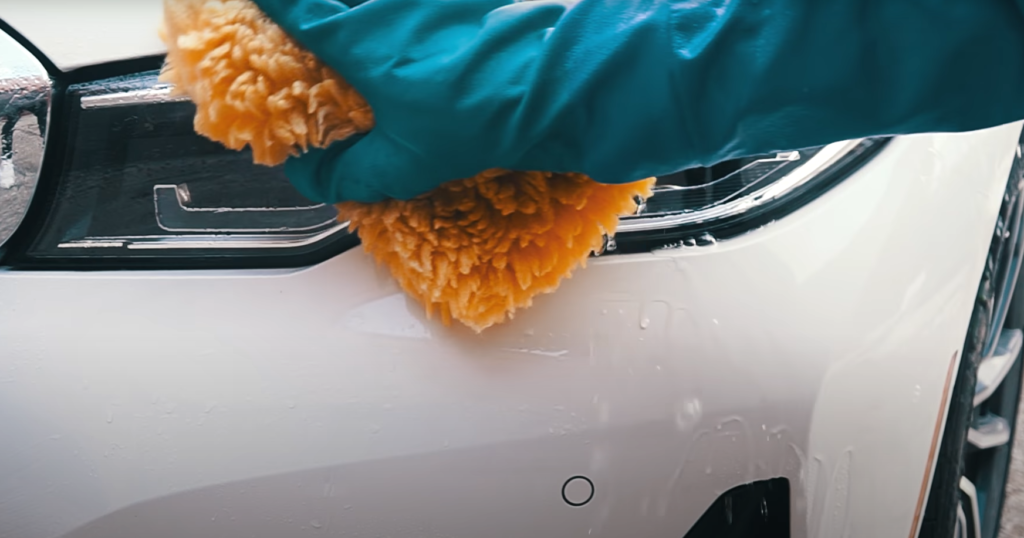
What is a local car wash?
Touchless wash
Touchless car washing uses high-pressure jets of water to remove dirt, debris, grime, and contaminants from the vehicle’s surface without the need for hand scrubbing or wiping with cloths. It utilizes powerful jets of spray that simultaneously agitate dirt and push it off the vehicle’s surface. This method is an increasingly popular choice among consumers who want their vehicles to be professionally cleaned without the risk of scratches and swirl marks that can come from manual car washing. Additionally, touchless car washes are often more cost-effective than traditional methods.
However, it is important to note that some vehicles may require additional services such as hand-waxing or polishing for best results.
Soft touch wash
Soft touch car washing is a method of cleaning vehicles wherein cloth mitts and brushes are used to scrub and wipe the dirt, debris, grime, and contaminants off the vehicle’s surface. This method utilizes special cleaning solutions that help to loosen up dirt before it is wiped away by soft cloth mitts or brushes.
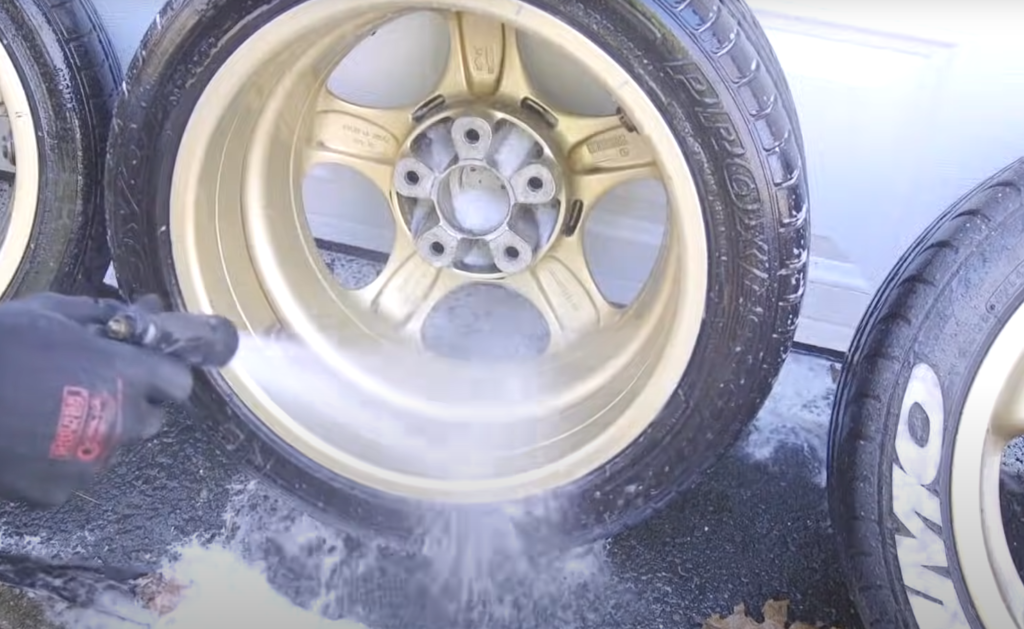
Soft touch car washes are often more thorough than touchless washes and can provide better protection against scratches and swirl marks. However, this method is also more labor-intensive than its touchless counterpart and may take longer to complete. Additionally, some manufacturers recommend avoiding this type of wash on certain vehicles due to incompatibility issues [2].
Foam cannon
This type of car wash is often used in conjunction with other methods, such as touchless or soft-touch washes, and is designed to help loosen dirt, debris, grime, and contaminants from the vehicle’s surface before they are removed.
Foam cannons are usually more expensive than traditional methods of car washing but offer better protection against scratches and swirl marks. Additionally, this method can be used on all types of vehicles without any compatibility issues. However, it is important to note that some manufacturers may recommend avoiding foam cannons on certain paint finishes due to potential damage caused by improper use.
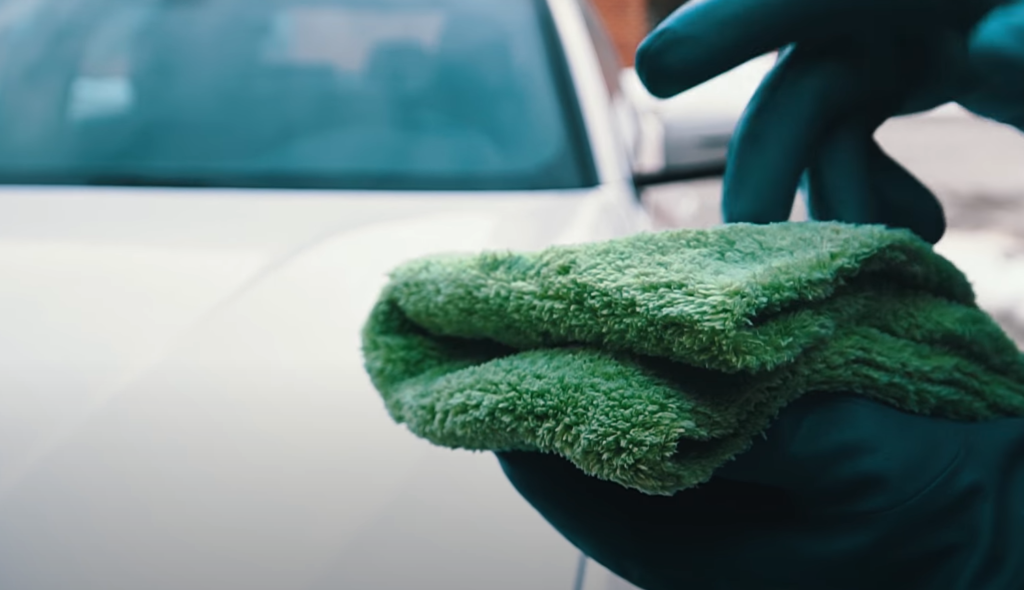
Options to consider when washing a car in winter
Wash your car in a heated garage
Washing your car in a heated garage is the safest and most convenient way to wash your car during the wintertime. It will keep you warm while also protecting your car from the elements. You can use a pressure washer or a regular hose and bucket to get rid of dirt and grime that could cause damage to the paint if it’s left on too long.
Use cold water when washing
When using a hose, make sure you’re using cold water instead of hot. Hot water can cause damage to some components like rubber seals and hoses that are not made for extreme temperatures. Cold water also won’t further dry out your exterior surfaces, which is especially important if you live in an area with very low humidity levels during the winter.
Choose a high-quality car wash soap
When selecting a car wash soap, try to find one that is specifically formulated for winter use. High-quality soaps are designed to break down salt and other chemicals left behind by roads treated for snow and ice. If you don’t have access to specialized soaps, look for ones that contain lubricants or waxes which will help protect your car’s finish from hard water spots while also providing some protection against damaging UV rays.
Run your car to heat it before and after washing
Before you start washing your car, it’s a good idea to run the engine for a few minutes to help heat up the exterior of the car. This will make it easier to remove dirt and grime as well as help reduce water spots when you’re done washing. After you finish, running your car again can help dry off any excess water on the surface and reduce the chances of corrosion or rust.
Use a finishing product after washing
Once you have finished washing your car, use a finishing product such as wax or sealant to further protect your paint from damage caused by winter conditions. A good finishing product will provide extra protection against weathering while also giving your car an added shine. Be sure to read the instructions carefully before applying any product to your car’s finish.
Wash your car during lunch or early in the afternoon
It’s generally better to wash your car during the day rather than at night. This will allow for faster drying time and reduce the chances of your car freezing overnight. Try to wash your car either during lunch or early in the afternoon when temperatures tend to be a bit warmer.
With these tips, you can protect your car from damage caused by winter weather while also ensuring that it looks its best all season long!
Spray lubricants onto hinges, handles, and locks
Winter weather can cause damage to the metal surfaces of your car, such as hinges, handles, and locks. To help protect these parts from corrosion and rust, use a lubricant spray specifically designed for automotive use. This will keep them working smoothly throughout the season while also providing some protection against water damage.
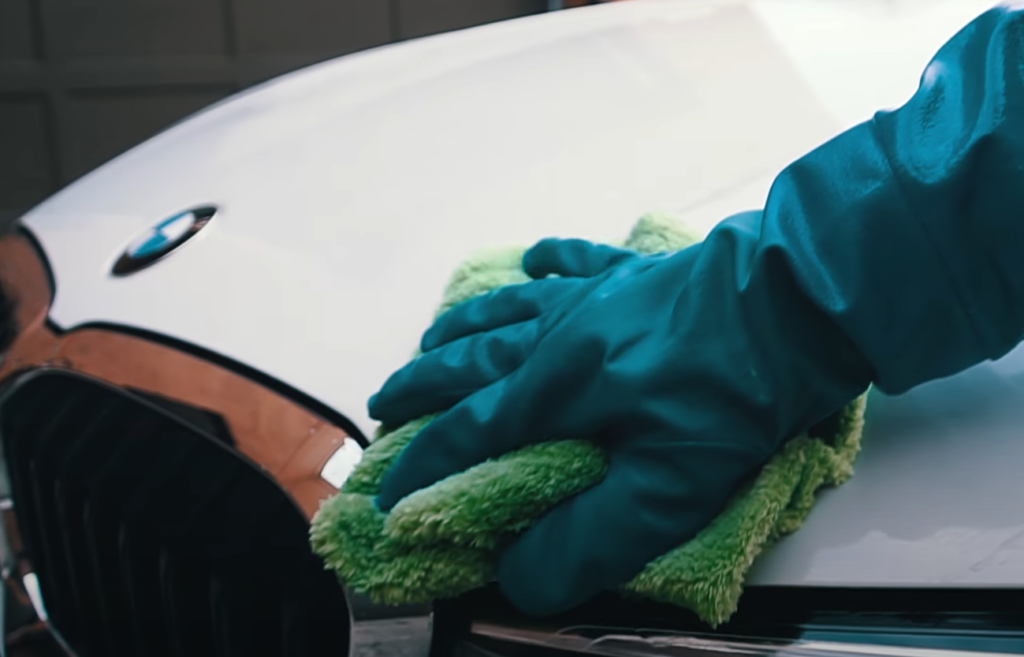
Check undercarriage regularly for salt buildup
During winter months, roads are often treated with salts and other chemicals to melt ice and snow. This can lead to a buildup of residue on your car’s undercarriage that can be difficult to remove without professional help. Regularly check underneath your vehicle for any signs of salt or other residue so you can take care of it before it causes permanent damage [3].
When shouldn’t you wash a car in winter?
Winter brings a variety of problems that can make washing your car a difficult task. In cold climates, there are often extreme temperatures and humidity that can be hard on both the paint and exterior components of your vehicle. Furthermore, freezing temperatures can cause detergents to freeze making them ineffective and potentially damaging to your car. Snow, ice, and road salt compounds can also stick to your car during wintertime, which further complicates the cleaning process.
All in all, it is best to avoid washing your car during winter unless necessary as you may end up exacerbating any existing issues or creating new ones due to inadequate protection from the elements. Instead, wait until warmer weather arrives when the temperature stays above freezing so that the cleaning process is more effective. Doing so should help to keep your car clean and protected from the elements throughout the winter months.
In addition, make sure you’re using a mild detergent specifically designed for vehicle cleaning that won’t damage the paint or other exterior components of your car. Also, consider using an automotive wax or polish specifically designed for wintertime use to protect your vehicle from the harsh conditions of winter.
Finally, be sure to thoroughly rinse off any detergents and polishes when washing your car during colder temperatures ahead of applying any new products. This will ensure that all residues are removed, which can prevent them from damaging your car’s surfaces during extreme temperatures. Doing so should keep it looking great throughout the winter months.
Thus, when it comes to washing your car in winter, it’s best to exercise caution and take the necessary steps to ensure that you don’t cause any damage to your vehicle. Waiting until warmer weather arrives is ideal but if you must wash your car then make sure you use the right detergents and products as well as thoroughly rinse off any residues before applying new ones. Doing so should help keep your car looking great amidst the harsh conditions of winter.
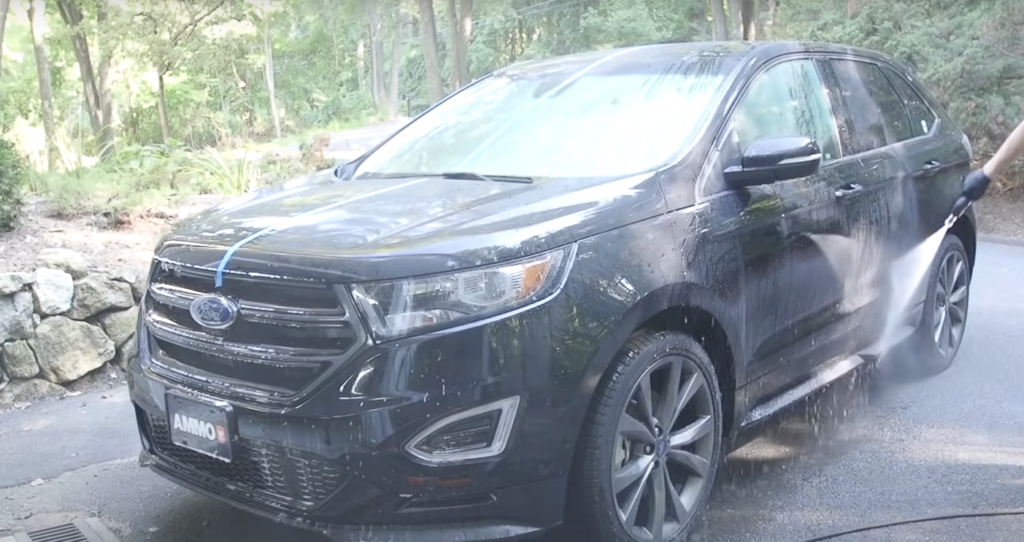
Frosty Dilemmas: Navigating the Ideal Conditions for Car Washing in Cold Weather
Contemplating whether it’s the right time to give your car a wash in chilly temperatures? Explore the comprehensive table below to understand the nuances of car washing in cold weather, potential challenges, and tips to ensure a clean vehicle without compromising its well-being.
| Temperature Range | Potential Challenges | Recommended Actions | Additional Tips |
|---|---|---|---|
| 1. Above Freezing (32°F/0°C) | Water may freeze on the car’s surface | Opt for a touchless or hand wash using warm water | Avoid washing in the evening to allow time for the car to dry before temperatures drop |
| 2. Near Freezing | Increased risk of ice formation | Use a no-freeze windshield washer fluid, and dry the car thoroughly | Park the car in a heated garage if available for a quicker drying process |
| 3. Below Freezing | Ice formation on the car’s surface | Consider professional car wash services or wait for a milder day | Apply a wax or sealant to protect the car’s finish during cold weather |
| 4. Severe Cold (Below 20°F/-6°C) | Risk of water freezing in hoses and nozzles | Avoid washing the car at home, opt for professional heated car wash services | Keep the car in a garage after washing to prevent rapid freezing |
Explanation of the table:
- Above Freezing (32°F/0°C): In this temperature range, water may freeze on the car’s surface. Opt for a touchless or hand wash using warm water and avoid washing in the evening to allow time for the car to dry before temperatures drop.
- Near Freezing: The increased risk of ice formation calls for using a no-freeze windshield washer fluid and thorough drying. Park the car in a heated garage if available for a quicker drying process.
- Below Freezing: With ice formation on the car’s surface, consider professional car wash services or wait for a milder day. Apply a wax or sealant to protect the car’s finish during cold weather.
- Severe Cold (Below 20°F/-6°C): The risk of water freezing in hoses and nozzles is high. Avoid washing the car at home and opt for professional heated car wash services. Keep the car in a garage after washing to prevent rapid freezing.
FAQ
How cold is too cold for a car wash?
The general rule of thumb is that car washes should not be done when the temperature drops below 40 degrees Fahrenheit. Cold water can cause components of your vehicle’s exterior to crack, and very cold temperatures can also damage the paint job on your car. If the air temperature is too low, wait until it warms up before washing your car.
Additionally, some popular car wash soaps may become less effective in colder temperatures. It’s best to check with the manufacturer for their recommended temperature range for use. For those living in areas with consistently cold climates (such as below-freezing temperatures), you may want to consider frequent waxing or sealing of your vehicle to protect its finish from the elements.
What do I do if my car freezes up?
If your car has been exposed to very cold temperatures, it can cause the engine fluids to freeze which can lead to severe engine damage. If you think your car is frozen, try running the engine for a few minutes to warm up the vehicle’s internal components. Alternatively, you could also use a space heater or portable heaters that are safe for cars and direct the hot air onto various components of your vehicle.
Additionally, if you’re leaving your vehicle parked outdoors during cold periods, consider investing in a block heater or battery warmer which will help keep your vehicle running smoothly.
What is the best way to clean my car?
The most common and effective method for cleaning your car is using a two-bucket wash method. This involves filling one bucket with soapy water and another bucket with plain, clean water. Start by washing one area at a time with soapy water, then immediately rinse it off with plain water to prevent soap residue from drying onto the car’s exterior.
For more detailed cleaning such as removing stuck debris or polishing scratches, you may want to invest in specific products for these tasks such as clay bars and waxes. Be sure to read up on product instructions before use and always test it in an inconspicuous area first before using it all over your car. When cleaning the interior of your car, be sure to use a vacuum or shop vac to remove debris and dirt from the seats and floor mats. For tougher stains, you may want to use specific cleaners designed for upholstery or leather seats. Lastly, always remember to never vacuum up any loose change, coins, or other items that could damage your machine!
How often should I wash my car in the winter?
The frequency of car washes should be decreased in the wintertime due to cold temperatures. Generally, it is recommended that you wash your vehicle once every 4-6 weeks during the colder months. This will help protect your paint job and reduce the chance of damage caused by cold water and harsh elements like road salt or dirt. Additionally, carefully check for any rust spots on metal components of your car after each wash to ensure that they are not getting worse due to exposure to moisture or other environmental factors.
For those living in climates with snowfall or extremely low temperatures, it may be beneficial to invest in a quality wax or sealant which can provide extra protection against these conditions. However, if you still plan on washing your vehicle frequently during the winter, be sure to use mild car soap that is designed for cold weather conditions so it doesn’t strip away any protective layers. Finally, always remember to never allow water from your washes or snow from the roads to freeze onto your vehicle as this can cause damage to the paint job and metal components.
Can I wax my car in the winter?
Yes, waxing your car can be beneficial in the winter months. Wax is designed to provide a layer of protection against harsh elements such as salt, sand, and dirt that can become more prevalent during colder temperatures. Additionally, wax also helps prevent any oxidation or fading on the paint job caused by UV rays which are still present even in winter months.
If you live in an area with consistently cold climates (such as below-freezing temperatures), you may want to consider frequent waxing or sealing of your vehicle to protect its finish from the elements. As for specific products, there are many available on the market specifically tailored for use during winter weather so make sure to read up on product instructions before choosing one.
How can I help my car recover from winter?
Once winter has passed and the temperatures start to rise, it’s a good idea to give your car some extra attention as it begins to adjust to cold weather. Start by inspecting all of the exterior components such as tires, windows, doors, wheel wells, and lights to ensure they are in proper working order.
At what temperature is it considered too cold to wash your car?
It is generally considered too cold to wash your car when temperatures drop below freezing, specifically around 32°F (0°C) or lower. Washing your car in extremely cold temperatures can lead to freezing of water on the vehicle’s surface, causing ice buildup and potential damage. Additionally, water-based cleaning products may not work effectively in freezing conditions, impacting the overall quality of the car wash.
What are the risks of washing your car in very cold temperatures?
Washing your car in very cold temperatures poses several risks. Water used during the car wash can freeze on the vehicle’s surface, leading to the formation of ice. This ice can cause problems with door seals, locks, and other components. Additionally, using water-based cleaning products in extremely cold conditions may result in reduced effectiveness, potentially leaving behind residue or streaks on the car’s finish.
Can I use a touchless or automatic car wash in cold weather?
Using a touchless or automatic car wash in cold weather is generally safer than a traditional hand wash, as these systems use controlled amounts of water and are designed to minimize freezing issues. However, it’s essential to check the specific operating temperature range of the car wash facility. Some touchless car washes may still be affected by freezing temperatures, and using them during extremely cold weather may not be advisable.
Are there alternative ways to keep my car clean in very cold weather?
In extremely cold weather, when traditional car washing may not be ideal, consider alternative methods to keep your car clean. Dry washing products, such as waterless wash and wax sprays, can be effective in removing light dirt and maintaining the appearance of your vehicle. Additionally, using a soft brush or broom to gently sweep away snow and debris can help keep your car clean without the use of water in freezing temperatures.
How can I protect my car’s finish during the winter without washing it?
To protect your car’s finish during the winter without washing it in extremely cold temperatures, consider applying a protective wax or sealant before the onset of winter weather. This creates a barrier that helps prevent salt, road grime, and other contaminants from adhering to the paint. Regularly inspecting and wiping down your car with a dry, clean cloth can also help maintain its appearance between washes in colder conditions.
What steps should I take if my car is already covered in ice or road salt in very cold weather?
If your car is already covered in ice or road salt in very cold weather, it’s recommended to wait until temperatures rise above freezing before attempting to wash it. Attempting to wash a car covered in ice can lead to further freezing and potential damage. Instead, consider using a brush or broom to gently remove loose debris and salt, and wait for more suitable weather conditions to perform a thorough car wash.
Useful Video: How to Wash your Car in Freezing Winter Temps!
Conclusion
Washing a car in winter requires a bit more preparation and effort than in other seasons. First, the vehicle should be cleaned with soap and water to remove road salt and dirt. Then, it can be dried completely before adding a layer of wax to protect against rusting. Additionally, extra care should be taken while washing the car in cold temperatures as it may cause damage to the paint job. Taking these steps will ensure your vehicle looks amazing all year round, no matter what season you’re in!
References
- https://www.thedrive.com/cleaning-detailing/35005/how-often-should-you-wash-your-car
- https://www.charmcitycirculator.com/how-cold-is-too-cold-to-wash-your-car/
- https://www.canadadrives.ca/blog/maintenance/tips-for-washing-your-car-this-winter





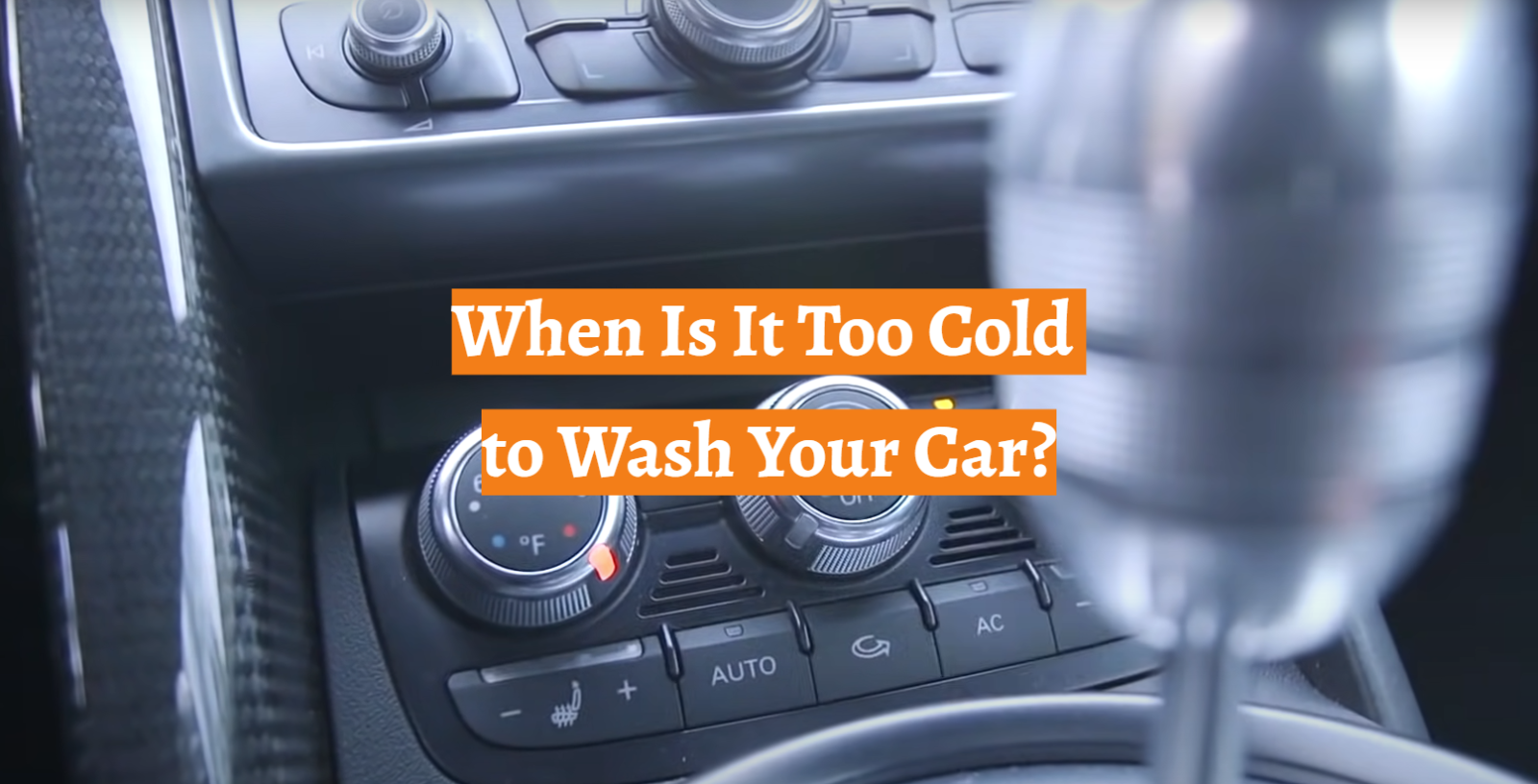




Leave a Review